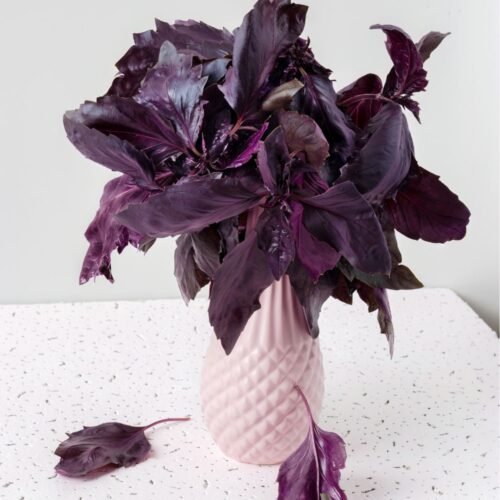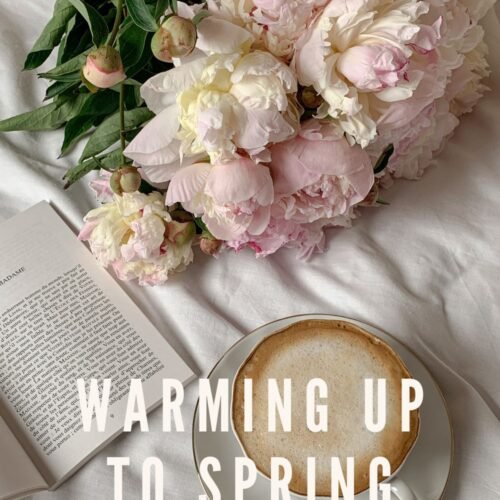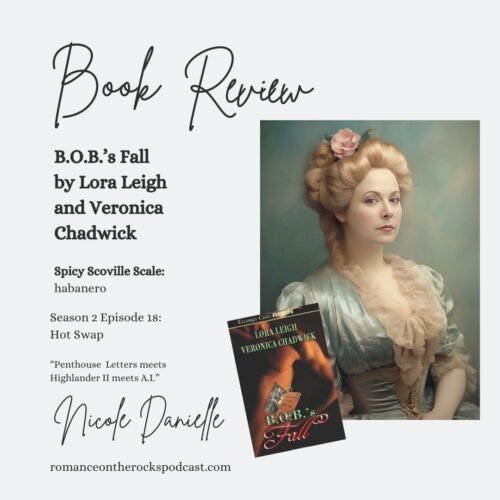This post may contain affiliate links — meaning we get a commission if you decide to make a purchase through our links, at no cost to you. We carefully curate our affiliate partnerships and only work with companies we like and believe in. Earning commissions like this helps us sustain our blog but the opinions we share are always our own.
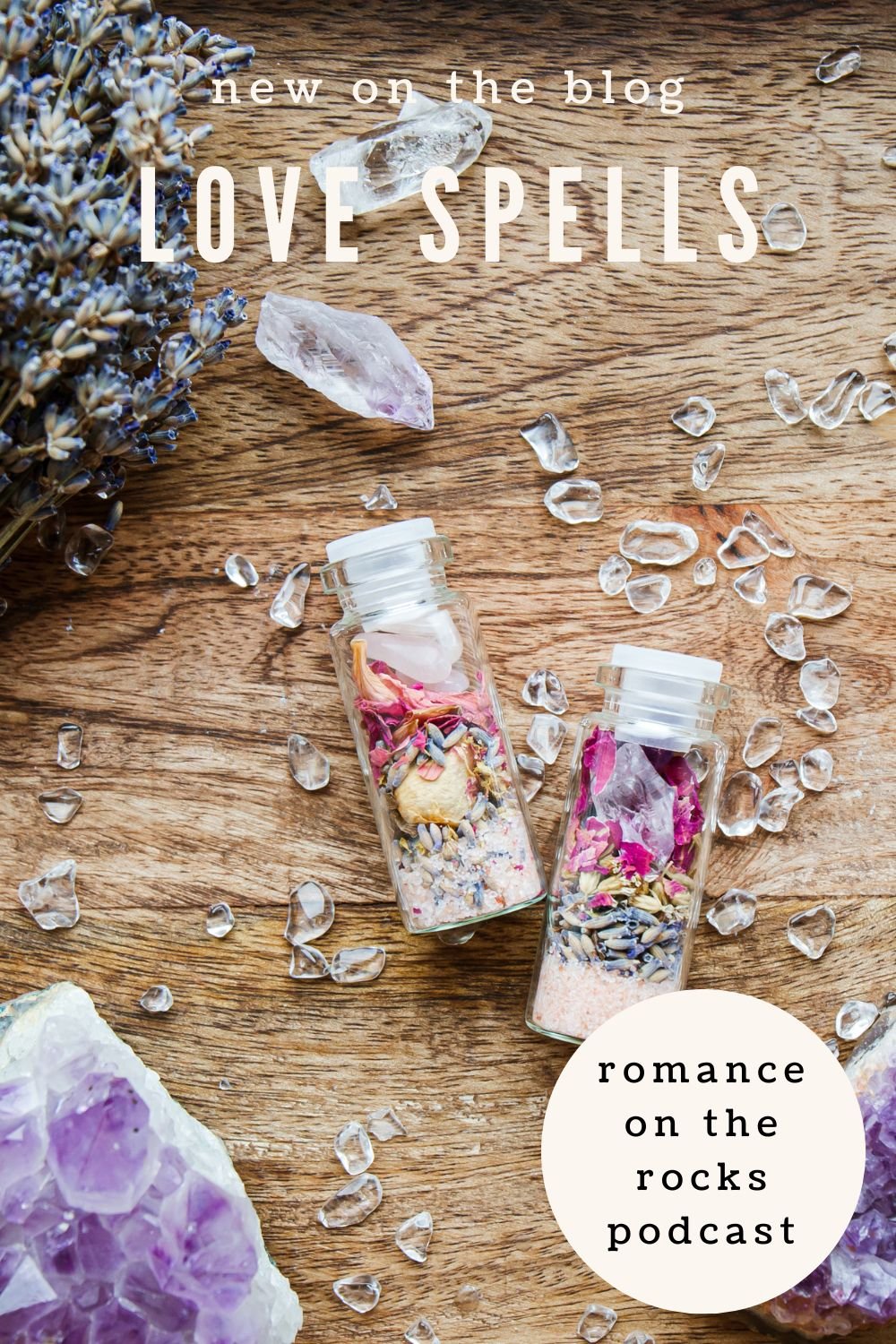
Monster romance is having a moment — and not only because October begs for fangs, fur and folklore. It’s the way these stories stretch the edges of desire, consent and identity while sneaking in humor and heart. This week’s pairing lands in two very different corners of the cryptid-verse.
Meghan’s got a high-speed, high-heat romp with a half-banshee heroine (and did Meg mention she’s half-banshee?) and a half-Sasquatch hero. While Nicole has a witch and werewolf slow burn that takes its time; layers in grief, friendship, and forgiveness; and still delivers generous open-door heat.
Set against our “Creature Feature” Month’s playful backdrop, both books reveal something bigger than the monsters they feature. These romance novels use exaggerated archetypes to test boundaries we recognize (safety, trust, power) and the language we use for bodies and wanting (trigger words abound for us!). And also show us why the most powerful moments often involve small, cozy rituals that make love feel lived-in and real.
Meghan Leigh’s Book: Sasquatch Love Spell by AC Ruttan
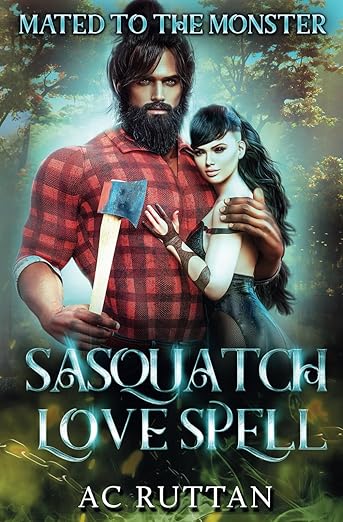
Meghan’s book, a 97-page rocket titled Sasquatch Love Spell, goes for immediate sizzle. The premise is tight: Aoife, a half-banshee (did we mention she’s half-banshee?) dodging an arranged marriage, stumbles into the orbit of Adam. He’s a half-Sasquatch whose world is policed by cruel laws and rumor. What follows is a sprint through scenting, secrecy, and rebellion as they square off against a high priestess mother and an elven prince who see Aoife as weapon and broodmare.
As fast as it moves, this book foregrounds a recurring question in paranormal romance SEO-headliners love — consent, protection, and risk — then complicates it with magical exemptions: a heroine sure she can’t get pregnant because she’s part “banshee” … until the text swerves. That tension forces a reader to measure heat against responsibility, kink against coherence, and it holds a mirror to how often romance tries to compress worldbuilding, intimacy, and stakes into novellas.
There’s a thrill in the audacity. Page-four ogling, page-six thrumming, and a world where scenting is both territorial and protective. There’s also friction — repetition, language choices that will ick some readers, and a heavy borrow from Seven Brides for Seven Brothers that prompts bigger craft questions about homage versus lift, intertextual nods versus reliance. Still, within the chaos, the book sparks a useful, evergreen conversation: how do we talk about bodies without flattening them to seed, loads, and derogatory labels? how do we write primal without punching down? and how long does a story need to earn intimacy that feels like more than velocity?
Nicole Danielle’s Book: How to Help a Hungry Werewolf by Charlotte Stein

On the other side sits How to Help a Hungry Werewolf, a richer stew of paranormal romance keywords — witch romance, werewolf romance, slow burn, friends-to-enemies-to-lovers, found family — that invites you to stay a while. Cassie inherits her grandmother’s home, grief, and a bevy of half-remembered rituals that shift, one by one, into witchcraft. When Seth (childhood best friend turned high-school nemesis) appears in the basement hunting for potion relief from his transformations, the book steers into a lane that balances comedy with care.
It’s whimsical without tipping into twee. There’s a sentient microwave delivering aggressive display threats, a talking raccoon familiar with tiny hands, and journals that reveal years of potion “soup” sessions Cassie never understood. That humor softens harder edges: betrayal, shame and the vulnerable work of re-earning trust. The slow burn here has a cost and a payoff. Early pacing drags a little as Cassie’s inner monologue loops on attraction and uncertainty. But once the emotional scaffolding locks, the heat lands with clarity — consensual, communicative and oh-so generous.
Take Aways
Between the reviews, we hit on two big romance truths. First: nostalgia is messy. That Sasquatch story nodding to Seven Brides for Seven Brothers? Depending on your mood, it’s either a cheeky remix or a cringey reminder that “kidnap your bride” isn’t exactly a swoony trope anymore. (In the episode, we get real about loving the dance numbers and childhood crushes while also side-eyeing what hasn’t aged well.)
Second: intimacy is an atmosphere. That “cuddle closet” scene? It’s not just cute — it’s a whole relationship hack. Make spaces that whisper softness — a blanket fort, a sunny window seat, a hammock strung just for two. Add in scent as memory — cologne on a pillow, a sweater you steal for lonely nights — and suddenly you’ve got a toolkit for romance that lasts longer than the first rush of spice. Even the food moments matter: crispy hash browns, magical soup, overloaded breakfast plates. Nourishment is a love language too. It’s proof you’re cared for, you have choices, and you’re safe enough to show up hungry.
Have you read either of these paranormal romances? What did you think of them? Comment below! We’d love to hear from you. Interested in reading these novels yourself? You can purchase Sasquatch Love Spell here. And you can score How to Help a Hungry Werewolf from The Ripped Bodice or Amazon. To learn more about author AC Ruttan, click here. And to learn more about author Charlotte Stein, click here. Want to listen to the podcast episode? We’re available on pretty much all your favorite podcast streaming services. Or you can visit our podcast player page here.
Are you a hopeless romantic and bookish biddy like us? We’d love to have you join in our adventures by signing up for our email list. Just fill out the form below!
